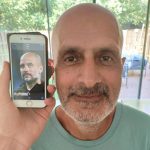This Collection brings together evidence from research funded or supported by NIHR about some ways to improve particular men’s health outcomes. Three of the Alerts we have chosen concern prostate cancer, the most commonly-diagnosed cancer in the UK. Across the UK, one in eight men will be diagnosed with prostate cancer in their lifetime and we know that about 400,000 men in the UK are living with – or after – prostate cancer. We also look at two other issues that relate to men’s health outcomes: treatment options for urethral narrowing, and the use of ‘prehabilitation’ before urological cancer surgery. We asked a number of health professionals, research experts and people with lived experience of these conditions and treatments to comment on the selected Alerts that are most relevant and important to them.
In writing about the evidence in these Alerts our contributors have brought out several common themes:
- How a reading of the evidence can improve understanding of the risks associated with procedures and interventions and the gains in quality of life that may be possible
- The importance of understanding the ‘trade off’ between different treatment pathways
- How helpful clear evidence can be when doctors and patients discuss treatment options
- The potential for patients to feel empowered in decisions about their condition and treatment
Their commentaries highlight what we can learn from the research summarised in the Alerts to better understand current approaches to these aspects of men’s health
The Alerts included in this Collection are:
- Men with urethral narrowing can be offered a choice of effective surgery
- High-intensity interval training rapidly improves fitness in patients awaiting surgery for urological cancer
- More precise classification of risk in prostate cancer reveals a huge variation in treatment
- Active monitoring in early prostate cancer prevents as many deaths as surgery or radiotherapy, new research shows
- Laser surgery for an enlarged prostate is no more effective than standard surgery
Men with urethral narrowing can be offered a choice of effective surgery
 Read the Alert on urethral narrowing
Read the Alert on urethral narrowing
Stuart Dodzo, student and urology patient
As a urology patient, I believe this research is important and results should be shared with patients, perhaps through their urologists, to aid their informed decision-making when choosing a procedure. This will also potentially improve patient experience. However, factors such as 'cost of (overall) treatment' via the NHS might have greater influence on what procedure the doctor offers the patient.
Dr Fred Higton, retired chemist with experience of stroke
This paper describes clearly the advantages and disadvantages of the two methods of treating this condition. This is elective surgery and so it gives the patient the evidence on which to make the decision. It is written in language that can be easily understood by a lay person.
Nikki Morris, CEO of Age UK Camden
This is really helpful research to support patient and surgeon decision-making. It’s reassuring for patients showing the effectiveness of both procedures. The article notes that surgeons often prefer to offer urethrotomy so it will be interesting to see if this research affects the choice offered to patients. It would be useful to have patient experience and more longitudinal data as well as further information on the health economics.
Trevor J Dorkin, consultant urological surgeon
This study has been hugely helpful for me and my patients. We now have evidence from a well-conducted randomised trial confirming the success of both endoscopic surgery and the more invasive urethroplasty for treating urethral strictures. However, neither option offers a 100% long-term cure rate. I can tell my patients there is a one in three chance they will need further surgery within 2 years following endoscopic surgery, and a one in five chance following urethroplasty.
The trade-off for the patient is between having a minor procedure with a higher stricture recurrence rate, and a major procedure with a lower recurrence rate. These are not easy decisions and other factors may be important, such as time off work or the distance to specialist centres for urethroplasty. Shared decision-making remains key and the patient needs to be informed of the relevant facts to aid treatment choice.
Manos Kumar, outreach advocate with experience of prostate cancer
What is important about this research from a patient’s perspective is that it brings to the forefront two highly important treatments for urethral narrowing. It aims to explore and contrast the levels of effectiveness and potency of both urethrotomy and urethroplasty, and ultimately decipher which treatment approach may be beneficial and suitable to a patient encountering urethral narrowing symptoms. From a patient's perspective it is refreshing to see Open Trial somewhat challenging the status quo methods of treatment and putting forward a need to develop urethral narrowing treatment and to ultimately ensure that there is no further redevelopment of symptoms. For patients like myself, it’s refreshing to hear of such research applying scrutiny to existing medical practices.
Chris Twelves, Professor of Clinical Cancer Pharmacology and Oncology
I continue to be surprised that many clinical decisions are made without the evidence for patients to make a decision, or for their doctors to make a recommendation.
One such area, of which I wasn’t aware, is men having difficulty passing urine due to narrowing of their urethra. Surgical treatment in the form of a relatively straightforward operation, urethrotomy, is the first option but in many men the symptoms return. Then the choice is between repeating the urethrotomy or undergoing a more complicated (and expensive) urethroplasty.
This Alert reports in a study that compared for the first time these options in a randomised trial, minimising the risk of bias. Importantly for a condition where the main issue is the symptoms the men experience, the main comparison was between “patient reported outcome measures” (PROMS) rather than relying on the researchers to judge to what extent a patient had benefited. The PROMS measures were complemented by objective measures such as urine flow rate and time to further intervention.
The trial showed that both treatments were effective, but the more complex urethroplasty worked for longer with fewer and was perhaps more effective, albeit with more adverse events. The results appear clear, but importantly the authors do not claim to have shown which is the “best” treatment. Rather, they emphasise having generated data that will allow patients to make informed decisions, and their doctors to make informed recommendations.
Derek Price, prostate patient advocate
Whenever there is a choice between procedures available to treat a condition it is important that the patient is given as much unbiased information as possible to determine which they would prefer. This study provides such information for men with urethral narrowing. The data from the trial will allow men to make their own informed choice free from misconceptions. They will be able to see that both procedures carry the same risk of serious adverse events and are both effective in improving symptoms. The clinician and patient will need to discuss the merits of having a more invasive procedure, which has slightly longer-term benefits compared with a less invasive procedure which has slightly shorter-term benefits. The deciding factor will then be determined by the individual patient's circumstances.
Julian Ashton, teacher and editorial board member
As I get older I notice increasingly that when I empty my bladder, it doesn't fully empty, so I assume this is a very minor version of the problem addressed in the paper. Although useful as a guide, in my opinion, a two-year follow-up is marginally sufficient and a longer period would be far more conclusive. There is a mention of a five-year follow-up but if funding were available is there any reason why, for example, results could not be collected at three and a half or four years? - it should indicate whether five-plus year follow-up is needed, and the sooner the longer results are obtained, the sooner they can benefit patients.
As it stands the results help decision-making about treatment by patients and clinicians, but more results would give more clarity. Also, there may not be enough data to fully assess the health economics in comparing the two methods. The cost of the more invasive option may be a barrier but the equations may not have been done. This potentially affects a very large number of people so it is highly important.
Jon Montague, has experience of bladder cancer
Men are notoriously reluctant to consult doctors about personal symptoms. If the research is suggesting there are more options to treat problems of this kind, so patients feel supported in decision making about the best option for them, this can only be a good thing. Being involved in decision making of this kind will mean patients are able to feel more empowered and take more ownership of their treatment.
High-intensity interval training rapidly improves fitness in patients awaiting surgery for urological cancer
 Read the Alert on high-intensity interval training
Read the Alert on high-intensity interval training
Nanik Pursani, recovering stroke and cancer patient
Although I have never tried high-intensity interval training (HIIT) – I was generally fit before undergoing treatment for prostate cancer as I swim regularly – my general fitness has been maintained both before and after having been diagnosed with prostate cancer.
Patients who have been diagnosed with prostate cancer would benefit from HIIT exercise but this might not be possible for some men who have other conditions and who are overweight. Men not understanding the benefits of physical exercise (HIIT) to aid recovery from invasive prostate treatment is a barrier, but could be overcome if someone who is diagnosed with prostate cancer is encouraged to exercise prior to and after attending hospital for treatment by his GP.
Lyndsy Ambler, Strategic Evidence Manager, Cancer Research UK
We know that fitness can affect how well a patient may be able to withstand their cancer treatment and therefore the effect this can have on decisions made about treatment by patients and their clinicians. It is therefore encouraging to see studies like this one showing a benefit of exercise before surgery. It will be important for future studies to investigate the impact of this approach on whether patients are able to have their surgery and on outcomes after surgery. Evaluation exploring how this could be implemented into cancer pathways in the NHS, potentially as part of a wider package aiming to support and prepare patients for treatment, will also be important.
Nikki Morris, CEO of Age UK Camden
This is an interesting piece of research that shows the benefit of exercise pre-operatively. However, how significant this is in cancer outcomes is not clear particularly as this is a small sample with a number of variables. How to scale this up effectively is not yet known although I welcome the studies currently in progress to explore this. As well as the biological effect it would be useful to assess the effect that this activity has on mental health/wellbeing prior to surgery.
Derek Price, prostate patient advocate
The study of HIIT in a group of men awaiting "major urological surgery" demonstrated a significant increase in cardiovascular fitness in the men. The short time-scale over which these results were achieved means that the introduction of such a regime pre-surgery would be of value to such patients and I believe it would have positive psychological benefits too. The study did not appear to follow up the patients after surgery to see if this fitness improvement translated to improvements in factors such as post-operative recovery time or reduction in complications. However, the article refers to previous studies which did show that prehabilitation improves surgical outcomes. It would appear that a supervised fitness programme such as that reported in the current study could have benefits for both the patients and for the health service. If larger studies were to show the same benefits, including cost-savings for the health service, then a universal scheme might be rolled out more widely. As a patient I would have welcomed the opportunity to participate in such a programme and feel that it would have resulted in improved mental and physical well-being both pre- and post-surgery.
Manos Kumar, outreach advocate with experience of prostate cancer
As a patient who has previously undergone surgery, I developed a sense of immense dread about how I would fare post-surgery from a stamina and fitness point of view – whether or not I could continue to comfortably undertake a 10,000 step a day walk or would I not be able to ever jog in my local park following the surgery.
I am supportive therefore of a HIIT programme, ideally held in a hospital/health care fitness area, which focuses on increasing pre-surgery patients’ endurance and physical health. It is important to implement such a course of action to allow the body to develop long lasting endurance, resistance to health fragility and fitness levels.
The HIIT project appears to have a meaningful value in preserving an individual’s quality of life and preventing complications post-surgery. I would assume that if it were to enter into the mainstream it would aim to expand across differing age ranges. Perhaps working collaboratively with gyms across the country may enable greater accessibility.
Julian Ashton, teacher and editorial board member
The exercise aspect attracted my interest as I have always found running beneficial physically and mentally. I am just a couple of years younger than the minimum age for the study, so I was rather surprised by how short the Interval training sessions were. "Patients completed five bursts of exercise, each of one minute". Although the upper end of the age range might find that amount of exercise demanding, most 65-year-olds wouldn't. I followed the link to the original paper, and found that "with patients encouraged to exercise to volitional exhaustion." That makes more sense! I also followed a link to see that there is a large body of literature on Interval Training and benefits for cancer patients, which is news to me.
This taken with the Alert changes my view of what's appropriate for cancer patients, as I tend to think of them doing, for example, Tai Chi and yoga. I would recommend someone in that position to find out more about it. It is quite clear from the alert that men with similar forms of cancer could benefit if closely supervised. However further research is needed to assess who is most likely to benefit and how to tailor the programme to the individual.
Fred Higton, retired chemist with experience of stroke
This paper is clearly written in plain English and easy to understand. It shows that HIIT improves the potential outcome of the surgery with a reduction of the side effects. It would serve a useful function of encouraging the patient to take the exercise so increasing the likelihood of a successful outcome.
Jon Montague, has experience of bladder cancer
This Alert is really interesting – I have never heard the term prehabilitation before now, and I really hope that pre, rather than rehabilitation becomes the goal for cancer patients. Lifestyle factors are so very important in cancer, and I really hope we move towards looking at factors such as diet and exercise as well as drug treatments.
Active monitoring in early prostate cancer prevents as many deaths as surgery or radiotherapy, new research shows
Read the Alert on active monitoring
Alan Bates, Prostate cancer patient
This study could be especially important in helping to inform considerations of the most appropriate treatment options for men diagnosed with localised prostate cancer. This is because there was no reliable data to directly compare the effects of active monitoring compared with surgery or radiotherapy before the randomised clinical trial findings reported in this study and summarised in the Alert. All the study findings and suggestions as reported in the Alert are therefore significant. The Alert reports that the study suggests that radiotherapy is most likely to be cost-effective for older men and intermediate or high-risk disease, active monitoring for younger men and low-risk disease. The study makes clear its limitations in that there were very few non-white men in the trial and the majority of men had low- and intermediate-risk disease, and that longer follow-up is needed which the research team is currently undertaking. As the Alert says, this will be eagerly awaited. The study is also significant in my view because it raises a wider question as to how NICE and similar bodies internationally, together review their guidelines on treatment, including by randomised controlled trials, noting that the Alert reports that NICE has updated its guidelines to say that patients may consider active monitoring.
Matthew Hobbs, Director of Research, Prostate Cancer UK
The ProtecT trial is an amazing achievement. To recruit this many men to this trial and deliver such an important and robust result is remarkable. The results have, rightly, already changed practice making Active Surveillance for men with the lowest grade prostate cancers the recommended treatment. Prostate Cancer UK has produced easy-to-understand guidance for men who are considering Active Surveillance or already being treated through Active Surveillance.
It is important to note that the accuracy with which we diagnose prostate cancer has improved significantly since men were recruited to the ProtecT trial thanks to the introduction of MRI imaging to detect prostate cancer and guide biopsies. That means that it is much less likely that more aggressive, higher grade cancer will be missed. Active surveillance in modern practice is therefore likely to perform even better for those men with low-grade disease diagnosed today than it did in this trial.
ProtecT is a large, well-conducted clinical trial that relied on the participation of over 1500 men with prostate cancer. As well as the key findings that have already been published, it has also generated a treasure trove of data and biological samples. We owe it to the patients who contributed to this trial to explore those assets fully and get as many answers from them as possible. For that reason, Prostate Cancer UK, with funding from Movember, has already awarded a grant to the ProtecT team to perform detailed further analyses over the next three years. The aim is to drive even more impact from this trial by using modern imaging techniques to find better ways to work out how aggressive a man’s prostate cancer is, and which is the best treatment for him.
Manos Kumar, outreach advocate with experience of prostate cancer
This Alert is well written and highly informative. It outlines the advantages of active monitoring, evidences it well with solid facts and is clear and understandable. However, for persons with diagnosed prostate cancer, the sheer thought of active monitoring being as effective of a substitute to the active intervention methods of both surgery or radiotherapy in the context of saving lives is very difficult to fathom and comprehend; even with the statistic which informs of 99% of men continuing to be alive regardless of whether they had received surgery, radiotherapy or active monitoring. The onus of concern for a prostate cancer sufferer therefore falls on the bleak 1% statistic: what if he ends up becoming the person who did not make it due to forgoing any active intervention processes such as surgery and radiotherapy in place of active monitoring? It also does not address matters concerning pain and suffering the prostate cancer sufferer is encountering and will continue to encounter unless some form of actual direct health intervention is delivered. An active monitoring process may also be somewhat costly for the NHS to maintain in the long term.
Lyndsy Ambler, Strategic Evidence Manager, Cancer Research UK
The ProtecT study provides valuable information for men with early prostate cancer and their clinicians as they make difficult decisions about treatment, balancing the risk of cancer progression with the detrimental effect that treatment can have on quality of life. The findings of this study suggest that men can take their time, weighing the benefits and risks of the different options, to decide which approach is best for them.
There is a clear need to better understand risk in prostate cancer to ensure that patients receive optimal treatment, taking into account all relevant factors that may affect risk including ethnicity.
Caroline Moore, Professor of Urology
This study looks at what happened 10 years after a diagnosis of prostate cancer based on a screening blood test, and a biopsy, where men were then randomly allocated to either surgery or radiotherapy treatment, or active monitoring. 99% of men are still alive at 10 years, whether they have had surgery, radiotherapy or monitoring. Men who have had surgery tend to have problems with urinary and sexual health, and men who have had radiotherapy are most likely to have problems with bowel and sexual health. Over half of men who started on monitoring did not have any treatment by 10 years.
This work is important because it shows that where cancer is detected early, even with old-fashioned screening tests, most men will not die of prostate cancer by 10 years. When modern management pushes men to make a treatment decision quickly, and penalises hospitals where men take longer to make a decision about what to do, it is helpful to know that delaying treatment by a few months will not make a difference to survival. More modern methods of both treating and monitoring prostate cancer are likely to help reduce the side effects of treatment, and to allow more accurate monitoring in men who are suitable.
Derek Price, prostate patient advocate
The study shows that 10-year survival rates for men with localised prostate cancer is the same for men on active surveillance as those treated with surgery or radiotherapy. This might, on the surface, suggest that active surveillance, which avoids the potential side effects resulting from the other treatments, is the best option for many men with the disease. However, this view needs to be tempered by the fact that the study also indicated that 55% of the patients changed from active surveillance to radical treatment. Perhaps more significantly there was twice the risk of the cancer spreading outside the prostate for men in the active surveillance group. Each person will choose their preferred treatment after discussion with their medical advisers. This study will help them with their decision-making by presenting the possible pros and cons of all three options. For many men the risk of recurrence will need to be weighed against the risk of the side effects of the treatment.
Julian Ashton, teacher and editorial board member
This study is very important. As a 63-year-old there is quite a high probability that I will test positive for PSA in coming years so it is relevant to me. The results will help informed decision-making by clinicians and patients, by arriving at the best way for each individual. I think the main barrier to implementation is that the medical profession might not be open to re-considering established ideas.
Fred Higton, retired chemist with experience of stroke
The paper compares the outcomes of three methods of dealing with early prostate
cancer: active monitoring,radiotherapy and surgery. It indicates that patients can do as well if actively monitored as with the other two more aggressive methods, both of which have the potential to cause damage and produce unwanted side effects.
This summary would be useful for the patient and would help them understand the rationale for the apparent lack of active treatment.
Nikki Morris, CEO of Age UK Camden
This is a large study which gives robust data to support patients and clinical staff in their options and decision making. It provides evidence and reassurance for both patient and doctor/nurse when discussing options. For many men particularly those diagnosed at the relatively early age of 50, 10 years of data is insufficient and I note the commitment to collect further data at 15 years. It would be interesting to understand patient mental health/wellbeing alongside other outcomes.
Chris Twelves, Professor of Clinical Cancer Pharmacology and Oncology
The risk of “over treatment” of those who might never have been diagnosed with, never mind died from, their cancer is perhaps greatest for prostate cancer. Prostate cancer remains a major cause of cancer deaths and its diagnosis has increased greatly with the increased use of PSA testing. Treatment of patients diagnosed with early prostate cancer with surgery or radiotherapy causes significant morbidity, but the option of “watchful waiting” is challenging without the evidence to make informed decisions about the trade-offs.
The ProtecT trial featured in this Alert provides much needed information, relevant to the modern era with patients randomised between the interventions (surgery or radiotherapy) and active monitoring. This study does not, and could not, provide definitive answers to what constitutes optimal treatment for patients with early prostate cancer. What it does do is provide information to help make these decisions. Given the nature of the sexual and other problems that can result from radical prostatectomy or radiotherapy, these are decisions that are best made by patients. One of the challenges for clinical teams will be to provide a framework for patients to understand risk, based on ProtecT, so that they can make the decision that is right for them and be supported subsequently.
More precise classification of risk in prostate cancer reveals a huge variation in treatment
 Read the full Alert on classifying risk in prostate cancer
Read the full Alert on classifying risk in prostate cancer
Stuart Dodzo, student and urology patient
This is a positive step towards moving from ‘one size fits all’ in treatment/care to more person-centred care. I believe the five-tier classification will help reduce the number of patients ‘falling through the cracks’ receiving essential treatment too early or too late.
Lyndsy Ambler, Strategic Evidence Manager at Cancer Research UK
Significant between-hospital variation in the treatment of favourable intermediate-risk prostate cancer is concerning and suggests that some patients may not be receiving optimal treatment. Decisions about treatment can be difficult and a more granular risk classification system such as the one used in this study could help men with prostate cancer and their clinicians to decide on the best approach for them. This five-tier classification system may also be useful in efforts to address variation in treatment such as the National Prostate Cancer Audit.
Matthew Hobbs, Director of Research, Prostate Cancer UK
The National Prostate Cancer Audit is an essential tool to understand the current reality for men diagnosed with and treated for prostate cancer. It is important that we use that resource to gain as much understanding about current clinical practice as possible and so it is great to see the work this team has done to interrogate the data to increase our knowledge. The results demonstrate a surprising level of variation in practice especially for men with favourable risk intermediate disease which suggests that some men might be being under-treated or over-treated.
What would make this analysis even more powerful would be an ability to follow these men through complete data linkage in order to see the longer term outcomes from men with favourable intermediate risk disease who chose active surveillance as their treatment. If we could see the outcomes for those men, rather than just the treatment they received, it would give us more understanding of the appropriateness of Active Surveillance for those men. That understanding would help us to develop and deliver clinical trials to provide more certainty to men with localised prostate cancer facing a difficult decision between different treatments. Even without those trials, additional data analysis might help to immediately reduce some of the variation seen here.
Prostate Cancer UK has a Specialist Nurse Service that can help men with any concerns or questions about prostate cancer, including the difficult choices men face when deciding between different treatment options for localised prostate cancer. We also have excellent guides to each of the treatment choices available.
Alan Bates, Prostate cancer patient
This study is important because it contributes new significant data to continuing discussion of active monitoring compared with radiotherapy or surgery. It questions the sensitivity of the current three-tier risk stratification in NICE guidelines and finds wide variation in how men diagnosed with non-metastatic prostate cancer are managed in different English NHS hospitals. The study has implications for men with intermediate-risk cancer. The Alert highlights that the study found that in some hospitals, almost all are offered radiotherapy or surgery. In other hospitals, they are much more likely to be monitored with active surveillance and spared the possible effects of treatment. The study shows the significance of the association between risk stratification, treatment options and treatment outcomes and that this should be kept under constant review. It seems it may be time for NICE to review its guidelines, taking these insights and this significance into account. NICE plans to update its recommendation on risk stratification and to consider the impact of changes to risk stratification on treatment recommendations in response to new evidence.
Nikki Morris, CEO of Age UK Camden
Understanding the reality of what's happening 'on the ground' is so important particularly as in this case, exposing such variations. Developing a sophisticated classification system to identify risk more accurately would appear to be an advancement. To understand how significant this work really is we need to know how this might affect decision making and subsequent outcomes. The research continues to reflect the challenge of treating prostate cancer effectively whilst trying to minimise side effects.
Chris Twelves, Professor of Clinical Cancer Pharmacology and Oncology
Decision making in cancer treatment is not easy, as shown by the challenges in treating patients with localised prostate cancer where active monitoring, radical prostatectomy and radical radiotherapy may each be reasonable options. A likely driver in variability in treatment selection is the degree of risk that the patient will subsequently develop metastatic disease and ultimately die of their cancer. This study suggests that with better risk stratification unexplained variability is seen between hospitals, especially in the treatment of patients with intermediate risk disease.
The authors use an updated schema to classify risk into 5 five levels. Not surprisingly, looking at hospitals across England, patients in the lowest (CPG 1) risk group were least likely to undergo radical treatment and those in the highest (CPG 4 and 5) risk the most likely treatment with radical surgery or radiotherapy. Within each of the risk groups there was substantial variability between hospitals in the proportion of patients receiving radical treatment, despite adjustment for demographic and other factors. This study should inform decision making by patients and their clinical teams in terms of the potential benefits of radical treatment for localised prostate cancer. The variability in the rates of such treatment suggest the need for better shared decision making.
Derek Price, prostate patient advocate
A broader three-tier classification system for prostate cancer is to be welcomed if it helps to reduce unnecessary radical treatments with their potential risk of life-changing side effects. The five-tier classification, by separating favourable and unfavourable intermediate disease, may be highlighting those patients who can enter active surveillance as their cancer may never need treatment. However, it is important that the three- and five-tier classifications are compared in a clinical study to ensure there is no significant increase in cancer progression in the low intermediate group undergoing active surveillance. Although many men would welcome the opportunity to avoid surgery or radiotherapy, others would be so concerned about living with a cancer (despite the fact it was unlikely to prove harmful in their lifetime) that they would prefer to undergo potentially unnecessary treatment.
Manos Kumar, outreach advocate with experience of prostate cancer
As a prostate cancer sufferer on the low risk margins, I have a sense of bafflement as to how much variation there is among hospitals in the way they handle patients diagnosed with prostate cancer. The research reported here is vital in developing what appears to be a fragile three tier stage statement and for there to be a much needed exploration of change in assessment frameworks and one which should be adopted across the board and not concentrated in one place.
Furthermore, one could understand that continuing to have the traditional three level grouping at a time when prostate cancer diagnosis is at a surge is feasible and a prostate cancer sufferer such as myself will welcome the development of a more effective and robust urology cancer framework which may ultimately save my life.
Caroline Moore, Professor of Urology
Men with localised prostate cancer are traditionally divided into three groups: low, intermediate and high risk. A new system has been developed, called the Cambridge Prognostic Score. It divides each of the intermediate and high risk cancers into two groups. This is particularly useful in the intermediate risk category where those with unfavourable intermediate risk cancer would probably benefit from treatment, and those with favourable risk intermediate cancer could safely be observed.
This research is important because it clearly shows that men are offered different options for favourable intermediate risk prostate cancer depending on which hospital they go to. More hospitals could safely offer active surveillance (monitoring) of the cancer, allowing men to avoid some of the potentially serious consequences of prostate cancer treatment, such as problems with urinary, sexual and bowel function. This work might encourage doctors who currently offer treatment to all of these men to offer surveillance instead, and could also encourage men to ask if they would be suitable for surveillance.
Nanik Pursani, recovering stroke and cancer patient
This research relates directly to me as I am a survivor of prostate cancer. I would have benefited from this research (my treatment was radiotherapy) and other men diagnosed with prostate cancer would benefit from the research. As a new patient, I would refer to the research and results when presenting myself for treatment.
Culture changes in hospitals to change their practices and a familiarisation of most current and recent research in the field are barriers to change. This research is important as if implemented it will change how hospitals treat patients with prostate cancer
Laser treatment for an enlarged prostate is no more effective than surgery
 Read the Alert on surgery for enlarged prostate
Read the Alert on surgery for enlarged prostate
Nanik Pursani, recovering stroke and cancer patient
I believe I could have been offered the new laser treatment. Had it been offered I would have asked about it and taken advice about how invasive it was and its effectiveness to aid recovery. Barriers to this treatment may include fear of the invasiveness, and recovery time.
Trevor J Dorkin, consultant urological surgeon
TURP has been around for several decades and is a good operation for relieving urinary retention and urinary symptoms. Many alternatives using different energy sources – including lasers – have been tried, but the fundamental test is whether they perform better than TURP. For me, this study confirmed TURP to be a better option than ThuVARP, both in terms of results and cost-effectiveness. It reminds us that just because a technique is new, it does not necessarily mean it is better. TURP has stood the test of time and alternative modalities need to be compared with it in prospective randomised trials.
Nikki Morris, CEO of Age UK Camden
This is an important study in that we can often think that newly developed treatments will have better outcomes. This study shows that in this instance it's not the case. This will support patients and surgeons with decision making. It will be helpful to collect data after a longer period of time post-op as well as understanding any effect, should there be a subsequent intervention.
Derek Price, prostate patient advocate
The study comparing the treatment for enlarged prostate with either the tried-and-tested TURP procedure or the new laser technique showed little difference in outcome. This can reassure men who are not offered a choice of procedures by their local hospital that there is no benefit from the modern procedure. However, since TURP has been used successfully for many years it has been shown that a small percentage of men will need a repeat procedure, at a later date, because the prostate has continued to grow. This means that a follow-up study might provide more information on the longer term effects of the laser treatment and whether it too requires repeating for some men.
Fred Higton, retired chemist with experience of stroke
The paper compares two methods of dealing with an enlarged prostate, the traditional surgical approach and the new laser method. It was thought that the laser approach would be less damaging than the traditional surgery. Results of the trial show that the two treatments are equivalent.
Learn more about our contributors
 Lyndsy Ambler is a Strategic Evidence Manager at Cancer Research UK and she previously worked for the NIHR, commissioning clinical and health services research. Her work is focused on understanding and improving access to optimal treatment for cancer.
Lyndsy Ambler is a Strategic Evidence Manager at Cancer Research UK and she previously worked for the NIHR, commissioning clinical and health services research. Her work is focused on understanding and improving access to optimal treatment for cancer.
 Julian Ashton studied Psychology & Physiology and his career has included acupuncture, horticulture, & teaching students with learning disabilities & mental health conditions. In recent years Julian has been on the editorial team of the Journal of Public Mental Health.
Julian Ashton studied Psychology & Physiology and his career has included acupuncture, horticulture, & teaching students with learning disabilities & mental health conditions. In recent years Julian has been on the editorial team of the Journal of Public Mental Health.
Alan Bates was treated with radiotherapy and hormone therapy for locally advanced prostate cancer which is in local remission. In his patient involvement he aims to work with other patients and clinician researchers to consider how we might boost research to find better treatments - and a cure - for the rare disorder blepharospasm.
 Stuart Dodzo is an MSc Human Factors and Patient Safety student with first-hand experience of the patient journey as a young person from a BAME background. This fuelled his interest in young people’s involvement in co-production and supporting ‘hard to reach/easy to ignore’ groups.
Stuart Dodzo is an MSc Human Factors and Patient Safety student with first-hand experience of the patient journey as a young person from a BAME background. This fuelled his interest in young people’s involvement in co-production and supporting ‘hard to reach/easy to ignore’ groups.
 Trevor J Dorkin is a consultant urological surgeon at the Freeman Hospital, Newcastle upon Tyne. He specialises in genito-urethral surgery including erectile dysfunction management.
Trevor J Dorkin is a consultant urological surgeon at the Freeman Hospital, Newcastle upon Tyne. He specialises in genito-urethral surgery including erectile dysfunction management.
 Dr Frederick Higton is a retired chemist who worked in product formulation in the pharmaceutical industry. Fred suffered a serious stroke in 2011. Since then he has volunteered with the NHS doing patient and public involvement work.
Dr Frederick Higton is a retired chemist who worked in product formulation in the pharmaceutical industry. Fred suffered a serious stroke in 2011. Since then he has volunteered with the NHS doing patient and public involvement work.
 Matthew Hobbs is the Director of Research at Prostate Cancer UK. He is responsible for overseeing the charity's ambitious research strategy: ensuring that the charity is fully informed about prostate cancer research happening around the world; identifying and investing in areas of the highest strategic importance; and making sure that the charity funds the very best research with the greatest chance of making a difference to men with prostate cancer.
Matthew Hobbs is the Director of Research at Prostate Cancer UK. He is responsible for overseeing the charity's ambitious research strategy: ensuring that the charity is fully informed about prostate cancer research happening around the world; identifying and investing in areas of the highest strategic importance; and making sure that the charity funds the very best research with the greatest chance of making a difference to men with prostate cancer.
 Manos Kumar is 32 and lives in North West London. He works in social work as an outreach advocate, currently on reduced hours as a consequence of his diagnosis. Manos enjoys participating in reviews and PPI discussions, where possible providing both lay and professional perspectives in research.
Manos Kumar is 32 and lives in North West London. He works in social work as an outreach advocate, currently on reduced hours as a consequence of his diagnosis. Manos enjoys participating in reviews and PPI discussions, where possible providing both lay and professional perspectives in research.
 Jon Montague is a member of the public who underwent successful surgery for bladder cancer in 2013. He lives in Southwest England with his wife.
Jon Montague is a member of the public who underwent successful surgery for bladder cancer in 2013. He lives in Southwest England with his wife.
 Caroline Moore is a Professor of Urology at University College London. Her work uses Magnetic Resonance Imaging in prostate cancer from community screening to diagnosis and treatment planning.
Caroline Moore is a Professor of Urology at University College London. Her work uses Magnetic Resonance Imaging in prostate cancer from community screening to diagnosis and treatment planning.
 Nikki Morris is the CEO of Age UK Camden and Chair of the RCN Cancer and Breast Care Forum Steering Committee. She worked for many years as an oncology specialist nurse and is passionate to promote the role of nursing and research in both the statutory and voluntary sectors.
Nikki Morris is the CEO of Age UK Camden and Chair of the RCN Cancer and Breast Care Forum Steering Committee. She worked for many years as an oncology specialist nurse and is passionate to promote the role of nursing and research in both the statutory and voluntary sectors.
 Derek Price was diagnosed with, and treated for, prostate cancer some years ago. He has a family history of the disease. As a result of this Derek has since become a patient advocate on a number of clinical trials and a patient representative on the National Cancer Research Institute Prostate group. He is also a volunteer for Prostate Cancer UK.
Derek Price was diagnosed with, and treated for, prostate cancer some years ago. He has a family history of the disease. As a result of this Derek has since become a patient advocate on a number of clinical trials and a patient representative on the National Cancer Research Institute Prostate group. He is also a volunteer for Prostate Cancer UK.
 Nanik Pursani is a recovering stroke and cancer patient with experience of undertaking, and delivering training about, public engagement and involvement with research.
Nanik Pursani is a recovering stroke and cancer patient with experience of undertaking, and delivering training about, public engagement and involvement with research.
 Chris Twelves is Professor of Clinical Cancer Pharmacology and Oncology at the University of Leeds, Director of the NIHR Leeds Clinical Research Facility and a medical oncologist at Leeds Teaching Hospitals Trust.
Chris Twelves is Professor of Clinical Cancer Pharmacology and Oncology at the University of Leeds, Director of the NIHR Leeds Clinical Research Facility and a medical oncologist at Leeds Teaching Hospitals Trust.
NIHR Evidence is covered by the creative commons, CC-BY licence. Written content and infographics may be freely reproduced provided that suitable acknowledgement is made. Note, this licence excludes comments and images made by third parties, audiovisual content, and linked content on other websites.
